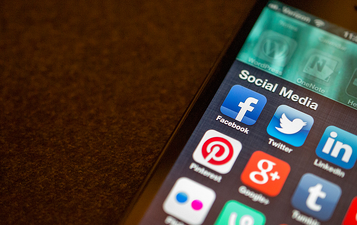Subscribe now and get the latest podcast releases delivered straight to your inbox.
 With a major increase in businesses implementing the power of social media marketing, it is becoming increasingly difficult to capture, and hold the attention of your audience.
With a major increase in businesses implementing the power of social media marketing, it is becoming increasingly difficult to capture, and hold the attention of your audience.
While a handful of factors go into the way your business is positioning your content, it can be overwhelming when it comes time to sit down and create a piece of content to post to one of your social platforms.
Will it reach your audience? Will they see the value? Or will it fall upon deaf ears?
While it's easy to toss out content aimlessly in an attempt to get noticed, but are you willing to sacrifice quality for quantity?
After all, it's the quality of your posts that leads to interaction and sharing, right?
Don't panic, before you approach your next piece of content, do yourself a favor and ask yourself these 4 questions.
Why are you posting it?
If you can't define the value of the content you are about to post, don't post it.
As inbound marketers, our goal is to post content that seeks to educate and solve problems. We don't just post because we feel like we have to, but rather our approach to posting to social media platforms is a bit more strategic.
Think of it this way, if the content you post poses no value to your customer, why would they think to share it? And if your content isn't getting shared, then why are you posting it? Social media is designed to encourage people to be social, hence the name.
You also want your content to be innovative. If your social media strategy consists of logging into Twitter, looking at what your competitors are posting about, and then duplicating it, you are never going to get a head.
If you're having trouble finding the value in your content, maybe it's time to go back to the drawing board. Think critically about what your role is on social media, and what your audience expects from you. Don't deliver anything less than your best.
Who are you posting it for?
Get to know your audience.
Don't be afraid to travel back in time a bit and uncover what type of content was well received in the past. This is any easy way to determine what works, and what you can do without.
Who you are posting for also has a lot to do with what tone you are using.
A inconsistent tone across channels may leave your customers confused, and less willing to invest their trust in your company. While we understand that each platform is tone-sensitive, and where humor is encouraged in some places, it is frowned upon in others.
You want to come up with a universal voice for your business that lends itself well to your specific industry.
Use language that your audience is familiar with. If they have trouble decoding your business jargon, chances are they won't bother trying.
Where are you posting it?
As i mentioned above, each platform is tone-sensitive, and it is important that when you approach each platform you post the type of content that best suits the platform's experience.
While Twitter serves as a great platform to broadcast your new ideas, reactions, and perceptions, LinkedIn calls for more professional industry insights.
It's all about generating an understanding the environment and expectations behind each social platform. It's likely that you wouldn't go to work wearing your pajamas, so leave your lengthy written posts off Instagram.
Focus on posting the right content to the right platforms.
If you're having trouble distinguishing between them all, consider how you use the platforms. When you log into LinkedIn, what are you looking for? What do you expect? Use this information to help your business what fits best where.
When are you posting it?
I would love to tell you the magical time to post your content in order to reach the largest amount of people, and foster the most engagement possible. However, this number does not exist.
While timing is dependent on your industry, your audience, the platform, and your specific product or service, there are a few general guidelines worth making note of to set your posts up for success.
According to HubSpot, Tweets posted late in the day and week (2 pm - 5 pm) are the most retweetable, and Facebook posts see the highest amount of shares on the weekend. (Source: HubSpot)


Order Your Copy of Marcus Sheridan's New Book — Endless Customers!

